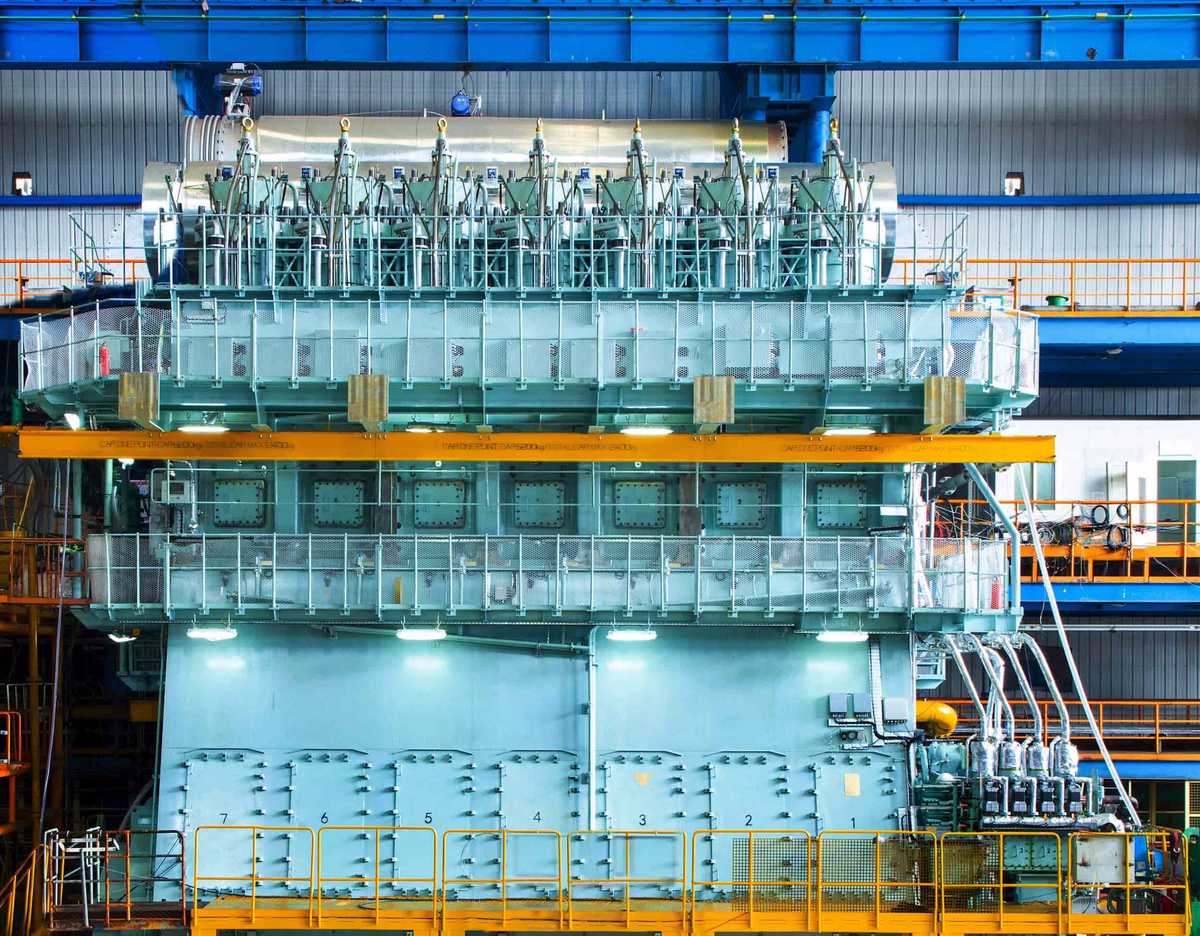Will ammonia-fuelled shipping continue to feed fossil fuel demand?
Ships powered by ammonia could use as much as 5-20% of pilot fuel - potentially keeping them dependent on fossil fuels for a long time.
 PHOTO: Model of WinGD's dual-fuel ammonia marine engine. WinGD
PHOTO: Model of WinGD's dual-fuel ammonia marine engine. WinGD
Since ammonia has a high auto-ignition temperature, it ignites and burns more slowly than fossil fuels. Therefore, ammonia-powered engines need a certain amount of pilot fuel, such as diesel, for ignition and combustion. This need for a pilot fuel prevents ammonia-powered engines from being truly zero-emission, at least for now.
Several marine engine manufacturers are developing ammonia-powered engines. Among them are Swiss Winterthur Gas & Diesel (WinGD), German MAN Energy Solutions (MAN ES), Finnish Wärtsilä and Japan Engine Corporation (J-ENG).
Currently, these companies are conducting fuel tests on their respective engines. MAN ES is planning for a final fuel mix containing around 95% ammonia and 5% of marine gasoil (MGO), Peter Kirkeby, principal specialist in dual-fuel engines at MAN ES, told a DNV webinar.
J-ENG’s four-stroke ammonia marine engine has been tested with an 80% ammonia-to-oil ratio, resulting in a 20% pilot fuel requirement. Meanwhile, a study by the European Marine Safety Agency (EMSA) estimates that smaller ammonia engines will consume 10% pilot fuel, while larger two-stroke engines will consume just 5%.
This indicates that ammonia-fuelled vessels are estimated to consume 5-20% of fossil fuel in the near term, which is still a significant amount when set against the fuel consumption of larger ships.
Zero emissions possible, but later
However, both Wärtsilä and MAN ES believe that there is potential for ammonia-powered vessels to sail with zero emissions in the future.
“As demand for reducing greenhouse gases increases further, and as future fuels become cheaper and more widely available, the quantity of green fuel blend-in is increased. In the end, our vision is to enable our customers to only use zero-carbon fuel," Mikael Wideskog, director of sustainable fuels and decarbonisation at Wärtsilä Marine Power, has told ENGINE.
Brian Ostergaard Sorensen, head of R&D for two-stroke businesses at MAN ES, said the ultimate goal is to run two-stroke engines entirely on carbon-neutral and carbon-free fuels produced from renewable energy using Power-to-X. But he highlighted that “until we have enough green fuel all over the world, we need to develop flexible fuel solutions now to move us towards green shipping.”
It is possible to replace diesel with biofuel or synthetic alternatives such as synthetic marine diesel oil (MDO) or dimethyl ether (DME) or even combine it with carbon capture technologies for ships. However, whether there will be widespread availability of these fuels and technologies remains unclear for the time being.
Ammonia engines are scheduled to debut next year at the earliest, but ships powered by ammonia could remain reliant on fossil fuels for a good while longer.
By Konica Bhatt
Please get in touch with comments or additional info to news@engine.online





